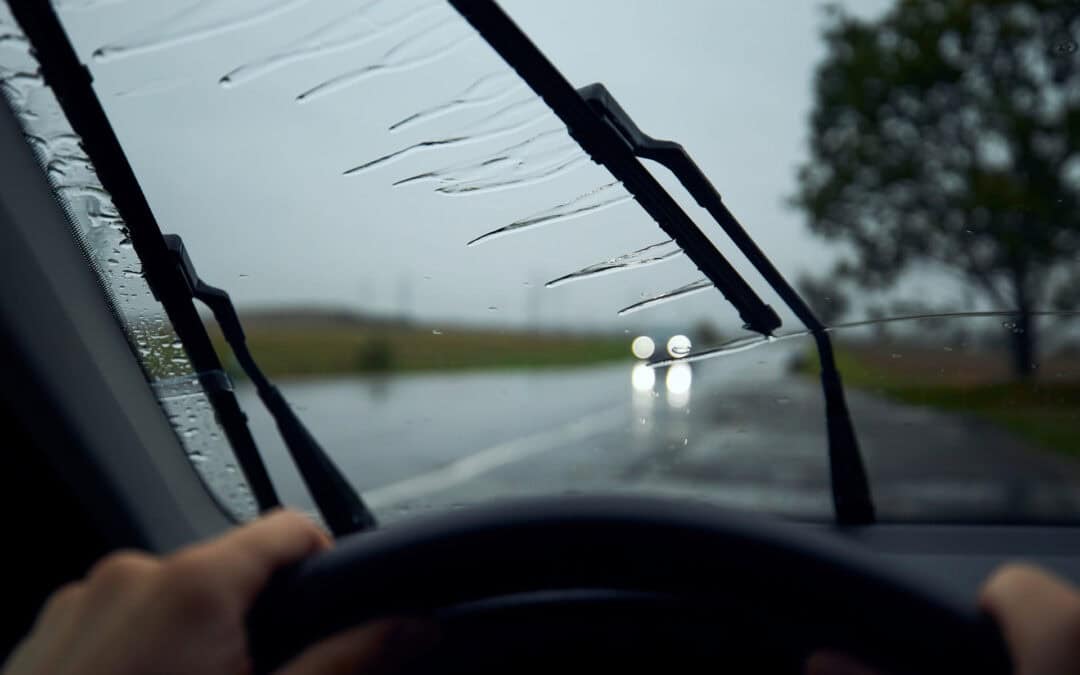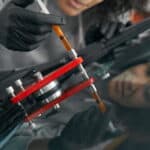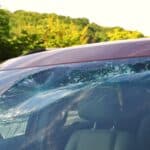When cracks or chips appear on a windshield, they compromise the structural integrity of the vehicle and increase the chances of an accident. People often underestimate the importance of windshield repair, allowing minor damage to turn into a costly and dangerous issue. A cracked windshield is a safety hazard that should never be ignored.
There are many reasons why ignoring a cracked windshield is dangerous. This will cover how cracked windshields impact visibility, vehicle safety, and your risk on the road. When left unrepaired, that small crack could spell disaster.
How a Cracked Windshield Puts Your Safety at Risk
Cracked windshields can create various problems for drivers, ranging from reduced visibility to a complete windshield failure. For instance, a driver might assume that a small crack is harmless, but as time passes, that crack will spread. A family member recently faced a similar issue—they noticed a tiny chip but shrugged it off, thinking it wouldn’t affect their driving. Within weeks, the crack spanned across the entire windshield, and they had no choice but to replace it. Small chips and cracks never stay small, and driving with one puts your safety at risk.
- Cracks weaken the windshield’s structural integrity, making it more likely to shatter upon impact.
- Weather conditions like extreme heat or cold can cause cracks to spread rapidly.
- Windshields are designed to support airbags; a cracked one might prevent proper airbag deployment during a crash.
How Cracks Obstruct Your View While Driving
Windshield cracks, even tiny ones, distort the driver’s view, especially when sunlight or headlights from other vehicles hit the glass. The crack refracts light in multiple directions, causing glares and making it difficult to see clearly. It’s easy to think that one little crack won’t make a big difference. However, when a glare from the sun strikes that crack, it can reduce reaction time.
Some drivers try to “look around” the crack, but this is risky and inefficient. Cracks not only impair your direct view but also distract you from the road, as your eyes continuously try to adjust to the broken glass.
- Cracked windshields scatter light, making it difficult to drive in bright sunlight or at night.
- Drivers often experience reduced peripheral vision due to larger cracks.
- Cracks near the edges can be particularly dangerous, as they distort the sides of the windshield.
Cracked Windshields Can Lead to Accidents
When cracks obstruct your vision or weaken the windshield, your risk of getting into an accident increases dramatically. This isn’t just speculation—data from the National Highway Traffic Safety Administration (NHTSA) shows that impaired visibility due to windshield damage is a significant factor in many accidents. The longer a crack goes without repair, the more likely it is to compromise your driving abilities, and in the worst cases, lead to collisions.
Most car accidents are preventable, and driving with a damaged windshield is an unnecessary risk that many drivers take. It’s not worth the gamble, especially when windshield repair is accessible and often covered by insurance.
- The NHTSA warns that cracks larger than six inches increase the likelihood of accidents.
- Windshield cracks reduce a vehicle’s ability to absorb impact in a crash.
- In some states, driving with a cracked windshield is illegal and can result in fines.
Cracks Compromise the Strength of Your Windshield
Windshields aren’t just for keeping bugs and wind out of your face—they are critical to the structural integrity of your car. They play a vital role in supporting the roof and preventing the cabin from caving in during a rollover accident. When a windshield is cracked, it’s less able to withstand impact, which puts the vehicle occupants at a much higher risk.
A windshield with a crack no longer distributes force across the glass evenly. In the event of a collision, that crack becomes a weak point, making the glass more prone to shattering. The windshield is a key element in your car’s safety system, and it should never be taken for granted.
- Cracked windshields cannot bear the same load as an intact windshield.
- In a rollover accident, a compromised windshield increases the chance of roof collapse.
- An undamaged windshield helps keep passengers inside the vehicle during a crash.
Small Cracks Spread Faster Than You Think
Many people ignore small cracks, assuming they’ll stay the same size indefinitely. Unfortunately, that’s rarely the case. A minor crack can spread rapidly due to temperature changes, vibrations, or the pressure from driving at high speeds. Before you know it, a small chip has turned into a full-blown crack running across your windshield.
Even small impacts, like driving over a pothole or hitting a bump, can cause a crack to expand. Those seemingly harmless daily occurrences add up, turning a manageable issue into a major expense. The sooner you address the problem, the better.
- Temperature fluctuations cause cracks to spread quickly.
- Road vibrations, especially from potholes or uneven terrain, stress the windshield.
- A crack that starts small can grow to cover the entire windshield in just days.
Weather Conditions Make Windshield Cracks Worse
Mother Nature doesn’t care if your windshield has a small crack—weather extremes will make it worse. Windshields expand and contract with temperature changes, which stresses the glass even more. If your windshield is cracked, cold weather can cause the glass to shrink and make the crack worse, while extreme heat can cause it to expand, also worsening the damage.
Think about how quickly temperatures can change. Whether it’s the heat from the sun or the chill from a frosty morning, cracks are bound to worsen. Addressing the crack before seasonal weather changes is key to avoiding further damage.
- Temperature swings from cold to hot can worsen existing cracks.
- Rain and moisture can seep into cracks, leading to further damage.
- Hot weather, especially in direct sunlight, causes the windshield to expand and crack further.
How Cracks Affect Airbag Deployment
Windshields are an integral part of your vehicle’s safety system. In the event of a crash, the windshield supports the deployment of airbags. If the windshield is cracked, it might not be able to handle the force of the airbag, leading to improper deployment. This could leave occupants unprotected during a crash and result in severe injuries.
Airbags deploy with immense force, and without a solid windshield, they may not deploy as designed. Ignoring a cracked windshield can compromise the effectiveness of your airbags, increasing the risk of injury in a collision.
- Airbags rely on the windshield for proper deployment.
- A cracked windshield might shatter when an airbag deploys, causing more injuries.
- Windshields are designed to prevent ejection from the vehicle during crashes.
Key Takeaways from Why Ignoring a Cracked Windshield is Dangerous
Safety always comes first when it comes to vehicle maintenance, and a cracked windshield should never be ignored. Cracks compromise the structural integrity of the windshield, impair visibility, and put passengers at greater risk of injury during an accident. Addressing small windshield cracks immediately can prevent expensive repairs and potentially save lives.
- Windshield cracks obstruct vision and increase accident risks.
- Cracked windshields weaken the structural integrity of vehicles.
- Repairs should be completed as soon as possible to maintain safety.
Frequently Asked Questions About Windshield Repair
- Can a small crack really affect my safety?
Yes, even small cracks weaken the windshield and can impair visibility. They also spread over time, making the situation more dangerous. - Is windshield repair covered by insurance?
Many insurance policies cover windshield repair, often with no deductible. It’s always best to check with your insurance provider for details. - How quickly should I repair a cracked windshield?
It’s recommended to repair a cracked windshield as soon as possible to avoid further damage and maintain safety. - What if the crack is in the corner of my windshield?
Cracks near the edges of the windshield are particularly concerning because they compromise the overall strength of the glass more quickly than central cracks. - Can I drive long distances with a cracked windshield?
It’s unsafe to drive with a cracked windshield for long distances. The crack can spread due to road vibrations, making your vehicle less safe the longer you drive.
Elite Windshield Repair LLC provides fast, reliable vehicle windshield repair services, specializing in fixing chips and cracks up to 10 inches. Founded in 2024, the company offers free mobile service across the North and South Shore, ensuring convenience for every customer. With a focus on quality, Elite Windshield Repair guarantees customer satisfaction by providing a 1-year warranty on all workmanship. The company also offers headlight restoration and windshield wiper replacements to keep your vehicle in top condition. Locally owned and operated, Elite Windshield Repair is committed to delivering exceptional service with every repair.












